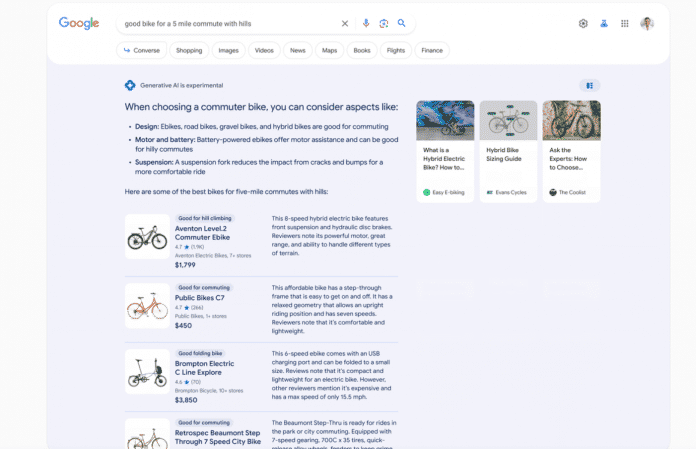According to Google, its core business is still search. With all the hype about generative artificial intelligence (AI), it is not surprising that Google has also announced new functions for this. However, one should not think that AI in search is fundamentally new. Google has long used a bunch of machine learning and AI – from ranking to filtering results, understanding questions and, of course, displaying advertising. Individual components are new for the user: these are a box that appears above the search results and Bard, a conversational AI.
With the new AI search, as Google itself dubbed it on the I/O, it is easier to ask complex questions and get clear answers. The example is: “For a family with a child under three and a dog, which is better, Bryce Canyon or Arches?” Both are national parks. So far, every user has probably asked for the two destinations individually, opened links, looked at pictures. In response to this question, a “Snapshot with key information” and links appear if you want to delve deeper. In this case, the entire area is green. As seen in a demo video at the I/O Keynote, the color obviously matches the theme, including a soft purple and orange.
Position zero for the AI results
The snapshot appears to take the position zero most of the time, i.e. it is at the top above the search results, just like the short excerpts from websites used to be. If there are matching shopping results, then the sponsored carousel rotates above. Google explicitly wants to be a good shopping advisor – the Shopping Graph database contains aloud blog post more than 35 billion products. The snapshot appears blue when searching for a suitable mountain bike.

(Image: Google)
Below the AI-generated text intended to answer the question are tabs that allow you to start a conversation with your own follow-up question or suggested questions. Bard is actually Google’s newly introduced conversational AI, but neither on stage nor in the blog post is it explicitly said that you can reach Bard via the button. “Taping on these will bring you into a new conversation mode where you can ask Google more about the topic,” it says instead. As is typical for Google, the entire snapshot is a bit overloaded at first glance, but you can still find your way around immediately. Something that probably applies similarly to previous searches and Google Maps, for example.
Google continues to show ads in search
The snapshot eliminates clicks on websites and thus advertising money for content creators – whether publishers, shops or others. Google has recognized this as well: “As we bring generative AI to search, we are committed to continuing to send valuable traffic to websites across the internet.” With this sentence, however, the topic ends for the time being.
However, Google is very clear that advertising will continue to appear between the search results. “We believe that ads are part of a functioning web and help people find the right products and services.” Admittedly with the same transparency standards as before – this means that ads will be distinguishable from organic hits. In this blog post, too, Google warns that AI is still in an experimental stage and can make mistakes.
The new search can already be tested as “Search Generative Experience, SGE” – but only in the USA. There you can talk about the newly created Search Labs choose which services to try and provide feedback. Labs is available via Chrome on desktop and the Google Apps for Android and iOS.
also read
(emw)
